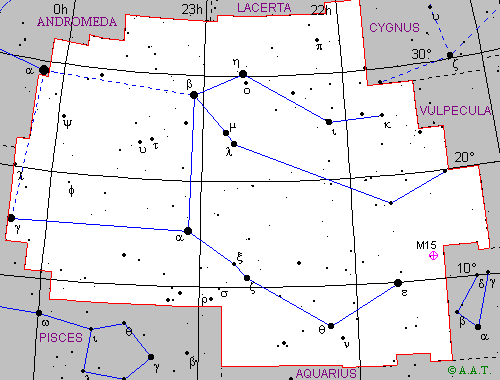 |
 |
| English name | Pegasus | ||||
|---|---|---|---|---|---|
| Major stars | alpha Pegasi | Markab | magn. 2,6 | RA: 23h 04m 45.65s | Dec: +15° 12' 19.0" |
| beta Pegasi | Scheat | magn. 2,6 | RA: 23h 03m 46.43s | Dec: +28° 04' 57.8" | |
| gamma Pegasi | Algenib | magn. 2,9 | RA: 00h 13m 14.16s | Dec: +15° 11' 00.8" | |
| epsilon Pegasi | Enif | magn. 2,5 | RA: 21h 44m 11.16s | Dec: +09° 52' 30.0" | |
| eta Pegasi | Matar | magn. 3,1 | RA: 22h 43m 00.14s | Dec: +30° 13' 16.5" | |
| Description | The constellation of Pegasus is the seventh one of the whole sky in order of extension, but it doesn't contain any particularly bright stars. Its characteristic feature is a big square, whose angles are shown by stars of second and third magnitude, although only three of them belong to Pegasus: the fourth one is the first star of Andromeda and once it was also called delta Pegasi. The brightest star of the constellation, however, is not a member of the big square, but it is in the southern part: it is Enif, an orange supergiant, approximately 500 light-years away.
|
||||
| Mythology and history | Pegasus was the winged horse born from Medusa's blood, when she was beheaded by Perseus. It was the mount of the hero Bellerophontes, until this latter, wanting to compete with the gods and to reach the sky, was punished by Zeus: the king of the gods, in fact, sent a horse-fly to sting the winged horse which, become restive, unsaddled Bellerophontes and crippled him. In the sky it is represented only the anterior part of the animal: the square is the body, the two lines of stars that depart from Scheat are the anterior legs, the line that begins from Markab and finishes with Enif draws the neck and the face (in Arab, Enif means "nose"). |
||||
 Back to constellations page.
Back to constellations page.